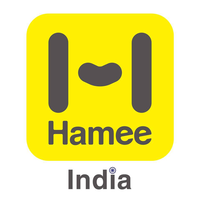NEW DELHI, March 15, 2019 /PRNewswire/ —

India, being the second most populous country in the world, has been an attraction for a large group of investors from around the globe to expand to new business opportunities and to capitalize on the growth. Having the youngest population percentage in the world, the country has a dominance over the market trends as the market seems to move largely by the millennial groups. On this note, the Japanese investors at large, have been attracted to the market lately and have been investing in both medium to larger size organizations seeing the huge potential being offered. Many brands have been expanding to retail chain stores in India while targeting groups that look into affordable products with a quality value to it.
Another Japanese chain ‘Hamee’ has entered India, which targets the same market via online channels and provides affordable products while targeting the millennials and understanding the user behaviour in this market. Hamee established its subsidiary in India in 2015, where they partnered with local channels to cater maximum visibility to its products online. Since online users have drastically increased due to cheaper data plans recently, Hamee believes that more people will be spending time searching products online due to its convenience value and simultaneously expect faster delivery and varied choices to opt for. Hamee believes that such demands can be catered with faster shipping, a huge catalogue and better management of inventory for end users to have the best possible shopping experience.

Hamee India is a 100 percent subsidiary of Hamee Corporation Japan, which is a listed company on the Tokyo Stock Exchange. They are coming up with a huge range of daily affordable accessories for the youth, while moving forward in support of Make-in-India and sourcing goods locally, which would completely support the Indian market’s overall growth.
On being asked about the Indian market, Pratik Nayek, the Director of Hamee India, adds: “Since Japanese technology has always fascinated us with quirky stuff and extraordinary technology, we are planning to target thrifty shoppers in India with our huge range of products from Japan and India, as we already have started sourcing from Indian local makers who provide us products really fast. We are an established brand in Japan, US and Korea and expanding to India, Taiwan and other Asian markets as well. In India, our focus is to work on low margins as the market is very competitive in the accessory business and needs differential pricing strategies.”
“Being invested in by our parent company itself, we are currently working on an online only model, which caters to pan-India customers via our chain of distributors. On seeing the trend across different cities, we will start expanding into the retail space in around late 2019, starting with offline pop up stores in Tier 1 and 2 cities and may improvise as per the demand in the market,” Pratik added.
Hamee in India has been rapidly expanding its categories starting with their major category that is mobile accessories, which includes phone covers, stands, cables, wireless gadgets etc. They have a business model targeting the office goers, which includes categories that every corporate person would love to use or carry around. This specific collection of theirs includes sleek MacBook Sleeves and laptop covers and also smaller leather goods such as card holders and wallets. Another major category is the stationery collection having items like designer notebooks, diaries, folders, stationery bags, etc.
They plan to introduce several categories in the near future, as the market demands, which may include products more inclined towards IOT gadgets as Hamee is currently launching its first IOT gadget named HAMIC for kids in Japan, which would be using artificial intelligence to make effective communication between parents and their kids.
Since the demand for gadgets has been at a peak level, kids may be prone to the same at a very young age. Since usage of gadgets has its pros and cons, HAMIC is being introduced as a first-of-its-kind gadget to solve the cons to an extent. HAMIC is a bear gadget that can be used by kids up to five years. This gadget is usually for those kids who cannot use a mobile phone effectively and for parents to keep a surveillance on whom and what their kids are talking to and about. It can be used easily by the kid with a tap on the gadget. The gadget which looks like a bear is connected to the HAMIC application, which can be installed on any or both parents’ mobile phones and all communication of their kids is recorded and shared on the app for the parents to see. Parents can even send messages via the app to their kids, which the bear can speak to the child when they tap the bear. This speaking gadget is a huge trend in Japan now and they have similar plans to expand it to the Indian and the US market in around 2020.
As for their India products, the prices range from 100-1,000 INR, which makes everything very affordable for their target segment. Hamee targets impulsive buying behavior, which can be understood by seeing their product range, business model and plans to expand rapidly in India. Seeing the booming e-commerce trend in India, Hamee has already had a two-fold increase in sales in the past three years and will be making more efforts to develop a brand recognition among its consumers.
Japanese investors clearly understand the importance of the Indian market and the growth potential it carries for them. Seeing the expanding e-commerce consumer base, Hamee would want to cash in on the opportunity to make India its leading market in the coming days.
About Hamee
Hamee India is the Indian division of Hamee Corp., the number one online cell phone accessory store in Japan. Hamee Corp. was founded in 1998 by Atsushi Higuchi. Since then, cell phone straps and accessories have become an everyday part of people’s lives. Our e-commerce business has outperformed competitors in Japan and has expanded in to many regions in Asia. Presently, Hamee Corp. has branches in Japan, United States, Korea, China, Taiwan, and India.





